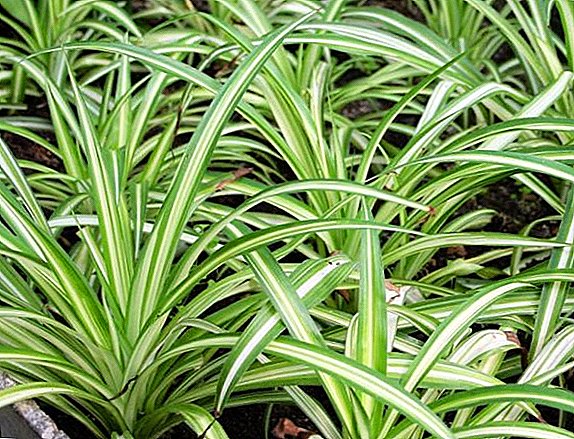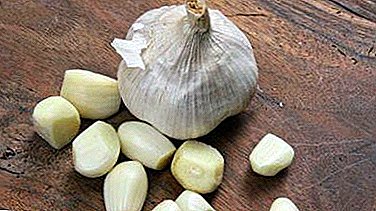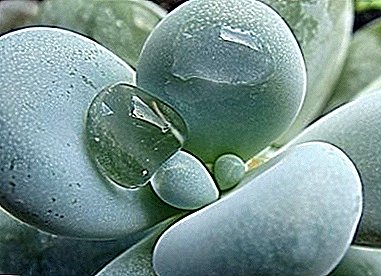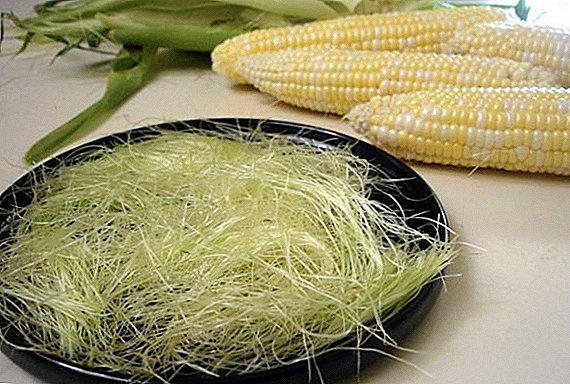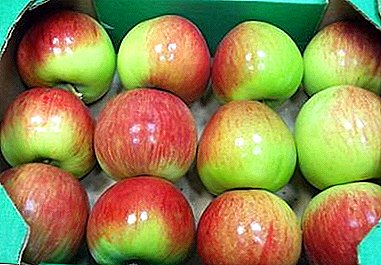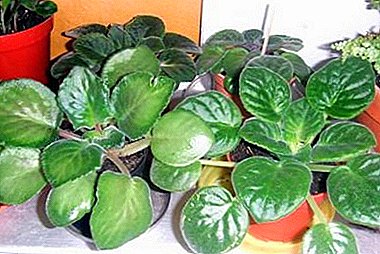
Small, colorful stars, collected in a neat bunch in a small pot attract almost all flower lovers.
Some gardeners are afraid to plant violet at home, as often it never blooms. Like and care for her proper and timely, the leaves are dark green and large and fleshy, but no inflorescences. It is worth noting that the violet is very capricious, and the more you try to please her, the longer you have to wait for flowering. What is the reason?
Why it happens?
There comes disappointment in the plant, there is no certainty that you can correct the situation, and the flower just goes into the trash. In fact, if you know the reasons for this behavior of violets, it can be achieved from a long and rapid flowering in a short time. So why the violet does not bloom?
Pot size
 If your beauty quickly grows green, forming many shoots, the bush is chic, if there are no signs of flowering, the reason is in the size of the pot.
If your beauty quickly grows green, forming many shoots, the bush is chic, if there are no signs of flowering, the reason is in the size of the pot.
Despite the fact that the plant is already quite large, do not regret a naughty flower - urgently move it to a small pot. Violet begins to bloom only when the roots are completely entwined with an earthy lump and they become cramped. As for large containers, in them the flower simply increases the green mass and the root system, and may not bloom at all.
You do not know how to choose the right pot - everything is extremely simple. Take a ruler, measure the outlet of violet. The resulting figure is divided by 3 - get the size of the flowerpots, which is to transplant the flower.
Soil composition
The violet is also demanding to the soil mixture, since its roots are delicate and very fastidious. If you place the plant in the usual land from the garden, then you will not wait for flowering - the roots will not be able to develop well in heavy, dense soil. In addition, the composition of the soil for the plant is of great importance. Violet loves acidic soils, because the main component is peat. The ground should be airy, light, loose.
It is necessary to take into account the fact that peat has the ability to quickly sour, so it is worth adding various disintegrating agents.
Add vermiculite to the soil, which perfectly retains moisture and at the same time enriches the soil, which is so necessary for oxygen to the roots of violet.
Land for planting violets is better to buy in the store, it is made in strict accordance with the needs of the plant.
Top dressing and fertilizer
If the plant develops slowly and does not bloom, although there are no signs of the disease. If the green has a pale color, the violet lacks vitamins and vitality. for the formation of inflorescences.
 For the plant to pick up color, it needs to be fed once a week, no less. But do not try to make the usual fertilizer for flowering plants, it will not appear violet. Need to buy a special blend of minerals and vitamins for Saintpaulia. The composition of these dressings is perfectly matched, and the exact dosage is spelled out on the package, which is important, since you cannot overfeed the violet.
For the plant to pick up color, it needs to be fed once a week, no less. But do not try to make the usual fertilizer for flowering plants, it will not appear violet. Need to buy a special blend of minerals and vitamins for Saintpaulia. The composition of these dressings is perfectly matched, and the exact dosage is spelled out on the package, which is important, since you cannot overfeed the violet.
Rule one - you want beautiful flowers from the plant, give it the right amount of vitamins, and not a handful of urea or organic matter, but a balanced and proper fertilizing every week.
Location
Saintpaulia - demanding plant to the conditions of detentiontherefore, a warm, well-lit room is suitable for her, but without direct sunlight.
Humidity
Low humidity in the room can cause non-flowering plants. Violet lover of reservoirs, so in the conditions of the apartment she needs to ensure proper conditions.
For abundant and long flowering, you must provide Saintpaulia with good humidity, which should reach 75%.
If in the summer period the plant ceases to form buds, then the reason is overdried air. As for the winter period, when the humidity in the room is reduced to 20%, because of the heating, even at rest the flower should be sprayed.
Blooming violets are sprayed twice a week from a spray bottle and only with warm water in the summer. In winter, next to the pots, install a container with water..
Illumination
 If the violet stretches upwards with leaves, at the same time the greens are pale and the petioles are thin - the beauty lacks lighting.
If the violet stretches upwards with leaves, at the same time the greens are pale and the petioles are thin - the beauty lacks lighting.
The plant is light-loving, and blooms only if it is provided with a 12-hour light day.
therefore It is necessary to install special phyto lamps for highlighting colors.
Even if in summer the plant has enough light, since it stands on a wide bright window sill, then in the winter period this light will not be enough anyway.
Air temperature
The optimal temperature for flowering violets - + 20-25 degrees in summer. In winter, the temperature can be reduced slightly with irrigation and give the plant a rest and gain strength before the next season.
Summer heat with direct sunlight, detrimental to violets. If hot days come, then the plant should be prhenit, pots put in a tray with wet vermiculite, peat or moss. The spraying process is carried out daily.
Watering
Improper watering has a detrimental effect on the plant and not flowering.This is the most harmless consequence, at worst the violet just dies.
Only timely and proper watering, the volume of which does not change during the entire time of growth will help not only to preserve the plant, but also make it bloom. Before watering, defend the water for 24 hours, it should be at room temperature. Watering Saintpaulia can be in several ways:
 Pour water into the pan in which the pot stands, leave for 15 minutes, as soon as the right amount of water is absorbed into the earthen room, excess water is poured. If this is not done, the soil can be swamped and the violet will not bloom.
Pour water into the pan in which the pot stands, leave for 15 minutes, as soon as the right amount of water is absorbed into the earthen room, excess water is poured. If this is not done, the soil can be swamped and the violet will not bloom.- Pour into a large basin of distilled water and set there pots with a plant. As soon as the soil becomes wet, they are removed and set in the same place.
- You can also use traditional watering, but you should make sure that the water does not fall on the outlet, for this it is better to adapt the old teapot, and water the violet under the bush from the spout.
- The latter method is quite new and modern - wick. To organize it, you have to spend a lot of time, but if you have a large collection of this beautiful flower, then in this case, such watering is very convenient.
Even in the process of transplanting, you need to prepare a wick, which will rise moisture. Take a cotton cord, fold one end into a ring and place it on the bottom of the pot between the drainage layer and the soil. Pull the other end into the hole at the bottom of the flowerpots.
After that transplant the flower. After that, flower pots are installed on a special pan with a lattice, the string goes down, and water is poured into the pan before the lattice.
It is enough just to make sure that the water in the pan does not run out, and the plant takes care of itself.
Bush density
If the plant becomes very thick, there are a lot of new shoots on it, the leaves become very shallow - this means it’s time to divide the bush, otherwise the violet will not bloom.
What to do to bloom?
There is one secret about which few florists know - Violet blooms only well at a young age of about 4 years. If a plant has more time, then it is practically impossible to obtain inflorescences from it. Therefore, the collection of Saintpaulia must be constantly updated.
 You can not allow the plant to grow, strictly watch that there are no more than 7 leaves on one stem, otherwise the flower will forget about flowering for a long time, since all the vital forces will go to the development of greenery, and as a result to improve the root system. Remove the lower leaflets, as if they were not sorry. It is impossible to cut off foliage, only to break.
You can not allow the plant to grow, strictly watch that there are no more than 7 leaves on one stem, otherwise the flower will forget about flowering for a long time, since all the vital forces will go to the development of greenery, and as a result to improve the root system. Remove the lower leaflets, as if they were not sorry. It is impossible to cut off foliage, only to break.
It is possible to provoke flowering by watering the plant with hot water, but according to the usual schedule and without fanaticism. Do not scald with boiling water, but pour 50 degrees with water. Experienced lovers of this plant say that this procedure is very popular with the flower, and it quickly responds with vigorous flowering.
It is often difficult to determine the absence of inflorescences.. Therefore, it is worth trying all the options and determining the cause by a simple exception.
Features flowering plants
It should be understood that the violet is a very demanding and capricious plant, and if you are a beginner gardener, it is better to start creating your own collection of plant species that are less demanding to care - this is mini-violet and some hybrids.
To take on breeding varieties should not be, they require a certain skill.
Diseases
The main enemies of violets are powdery mildew, late blight, aphid and gray rot.. If the plant was covered with spots, a gray bloom appeared on it, the saintpaulia fell ill and she simply had no strength to form inflorescences. As soon as the first signs of the disease were noticed, measures should be taken immediately, since the disease can spread from one plant to the entire collection. You can read more about the diseases and pests of violets in this article.
Conclusion
Despite the fact that the violet requires constant, careful maintenance, many gardeners successfully plant these plants at home. At the first stage, it is better to start with simpler species, while it is desirable to select cultures with the same care requirements. Over time, when the experience in the cultivation of Saintpaulia will be more, you can switch to breeding varieties.


 Pour water into the pan in which the pot stands, leave for 15 minutes, as soon as the right amount of water is absorbed into the earthen room, excess water is poured. If this is not done, the soil can be swamped and the violet will not bloom.
Pour water into the pan in which the pot stands, leave for 15 minutes, as soon as the right amount of water is absorbed into the earthen room, excess water is poured. If this is not done, the soil can be swamped and the violet will not bloom.